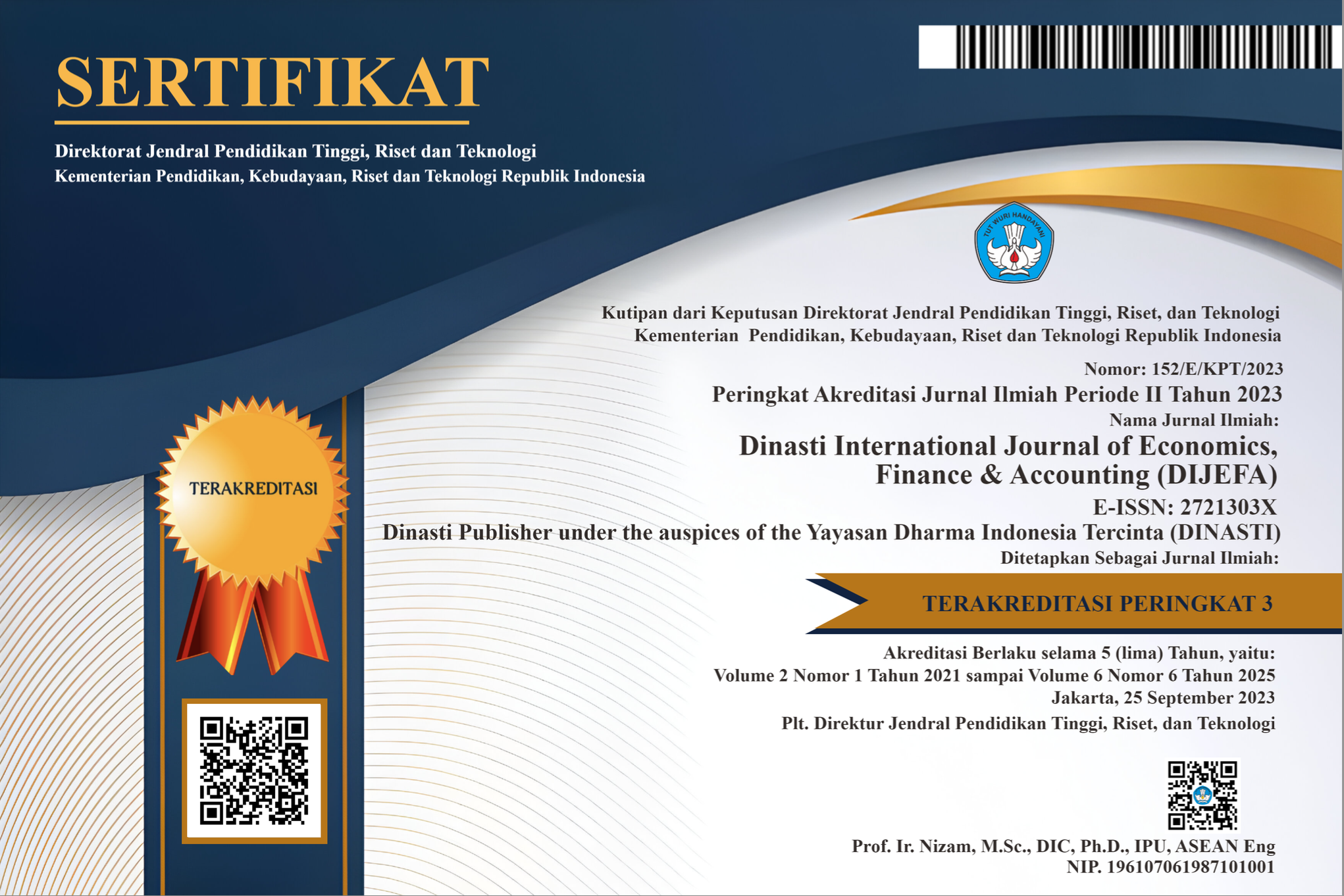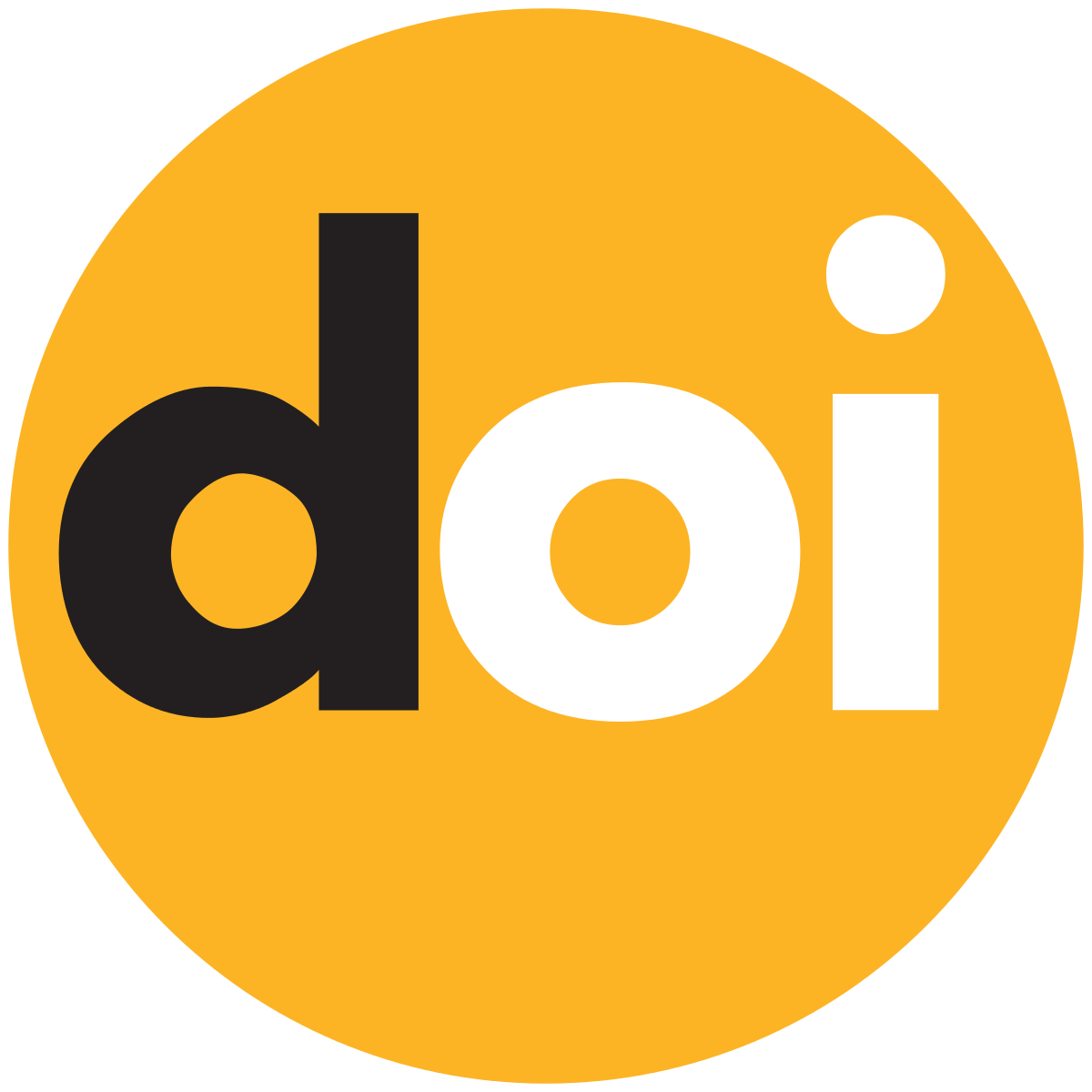Driving Competitive Advantage in the Digital Era: The Role of Dynamic Capabilities, Innovation, and Leadership
DOI:
https://doi.org/10.38035/dijefa.v5i5.3873Keywords:
Dynamic Capabilities, Innovation, Leadership, Organizational Agility, Knowledge Management, Digital Transformation, Competitive AdvantageAbstract
This investigation seeks to offer a thorough examination of the scholarly literature concerning the interrelationships among dynamic capabilities, innovation, leadership, organizational agility, knowledge management, and digital transformation in attaining enduring competitive advantage. A methodical review encompassing 120 academic works was undertaken, consolidating crucial insights into how dynamic capabilities enable organizational adaptation to shifting market dynamics and technological advancements. The analysis centre’s on the interaction between innovation, agility, leadership, and knowledge management in cultivating competitive advantage. The results suggest that entities prioritizing innovation and flexible structures are more adept at addressing disruptive market forces. Moreover, transformational leadership is instrumental in fostering an environment of ongoing improvement and knowledge dissemination, subsequently enhancing organizational efficacy. The synergy of these elements substantially contributes to the efficacy of digital transformation initiatives and sustained competitive advantage. This study emphasizes the significance of nurturing dynamic capabilities, promoting innovation, and employing leadership approaches that encourage agility and knowledge sharing in propelling successful digital transformation. Organizations may leverage these findings to harmonize their strategies for navigating the intricacies of contemporary business landscapes. This scholarly work provides a sophisticated comprehension of the interconnections between dynamic capabilities, innovation, leadership, and digital transformation. It accentuates the pivotal function of these factors in securing a competitive position within swiftly evolving markets.
References
Alavi, M., & Leidner, D. E. (2001). Review: Knowledge management and knowledge management systems: Conceptual foundations and research issues. MIS Quarterly, 25(1), 107–136.
Ambrosini, V., & Bowman, C. (2009). What are dynamic capabilities and are they a useful construct in strategic management? International Journal of Management Reviews, 11(1), 29–49.
Bass, B. M., & Avolio, B. J. (1994). Improving Organizational Effectiveness through Transformational Leadership. Sage Publications.
Bass, B. M., Avolio, B. J., & Goodheim, L. (1987). Biography and the assessment of transformational leadership at the world-class level. Journal of Management, 13(1), 7–19.
Bingham, L. B. (2005). Dynamic performance capabilities: A review and research agenda. Management Decision, 43(6), 769–789.
Boal, K. B., & Hooijberg, R. (2001). Strategic leadership research: Moving on. The Leadership Quarterly, 11(4), 515–549.
Cabrera, A., & Cabrera, E. F. (2005). Fostering knowledge sharing through people management practices. The International Journal of Human Resource Management, 16(5), 720–735.
Christensen, C. M. (1997). The Innovator’s Dilemma: When New Technologies Cause Great Firms to Fail. Harvard Business Review Press.
Damanpour, F. (1991). Organizational innovation: A meta-analysis of effects of determinants and moderators. Academy of Management Journal, 34(3), 555–590.
Dodgson, M., Gann, D., & Salter, A. (2006). The role of technology in the shift towards open innovation: the case of Procter & Gamble. R&D Management, 36(3), 333–346.
Doz, Y. L., & Kosonen, M. (2008). Fast Strategy: How Strategic Agility Will Help You Stay Ahead of the Game. Wharton School Publishing.
Eisenhardt, K. M., & Martin, J. A. (2000). Dynamic capabilities: What are they? Strategic Management Journal, 21(10–11), 1105–1121.
Highsmith, J. (2002). Agile Software Development Ecosystems. Addison-Wesley.
Kane, G. C., Palmer, D., Phillips, A. N., Kiron, D., & Buckley, N. (2015). Strategy, not Technology, Drives Digital Transformation. MIT Sloan Management Review and Deloitte University Press.
Nonaka, I., & Takeuchi, H. (1995). The Knowledge-Creating Company: How Japanese Companies Create the Dynamics of Innovation. Oxford University Press.
Polanyi, M. (1966). The Tacit Dimension. University of Chicago Press.
Schumpeter, J. A. (1942). Capitalism, Socialism and Democracy. Harper & Brothers.
Teece, D. J. (2014). Explicating dynamic capabilities: The nature and microfoundations of (sustainable) enterprise performance. Strategic Management Journal, 28(13), 1319–1350.
Teece, D. J., Pisano, G., & Shuen, A. (2007). Dynamic capabilities and strategic management. Strategic Management Journal, 18(7), 509–533.
Tibben-Lembke, R. S. (2006). Agility: How to Navigate the Fast-Changing Business World. Greenleaf Publishing.
Vial, G. (2019). Understanding digital transformation: A review and a research agenda. The Journal of Strategic Information Systems, 28(2), 118–144.
Westerman, G., Bonnet, D., & McAfee, A. (2014). Leading Digital: Turning Technology into Business Transformation. Harvard Business Review Press.
Westerman, G., Calméjane, C., Bonnet, D., Ferraris, P., & McAfee, A. (2011). Digital Transformation: A Roadmap for Billion-Dollar Organizations. MIT Center for Digital Business and Capgemini Consulting.
Zott, C., & Amit, R. (2010). Business model design: An activity system perspective. Long Range Planning, 43(2–3), 216–226.
Downloads
Published
How to Cite
Issue
Section
License
Copyright (c) 2024 Noor Ul Amin, Muhammad Asif Khan

This work is licensed under a Creative Commons Attribution 4.0 International License.
Authors who publish their manuscripts in this journal agree to the following conditions:
- The copyright on each article belongs to the author(s).
- The author acknowledges that the Dinasti International Journal of Economics, Finance & Accounting (DIJEFA) has the right to be the first to publish with a Creative Commons Attribution 4.0 International license (Attribution 4.0 International (CC BY 4.0).
- Authors can submit articles separately, arrange for the non-exclusive distribution of manuscripts that have been published in this journal into other versions (e.g., sent to the author's institutional repository, publication into books, etc.), by acknowledging that the manuscript has been published for the first time in the Dinasti International Journal of Economics, Finance & Accounting (DIJEFA).


























































